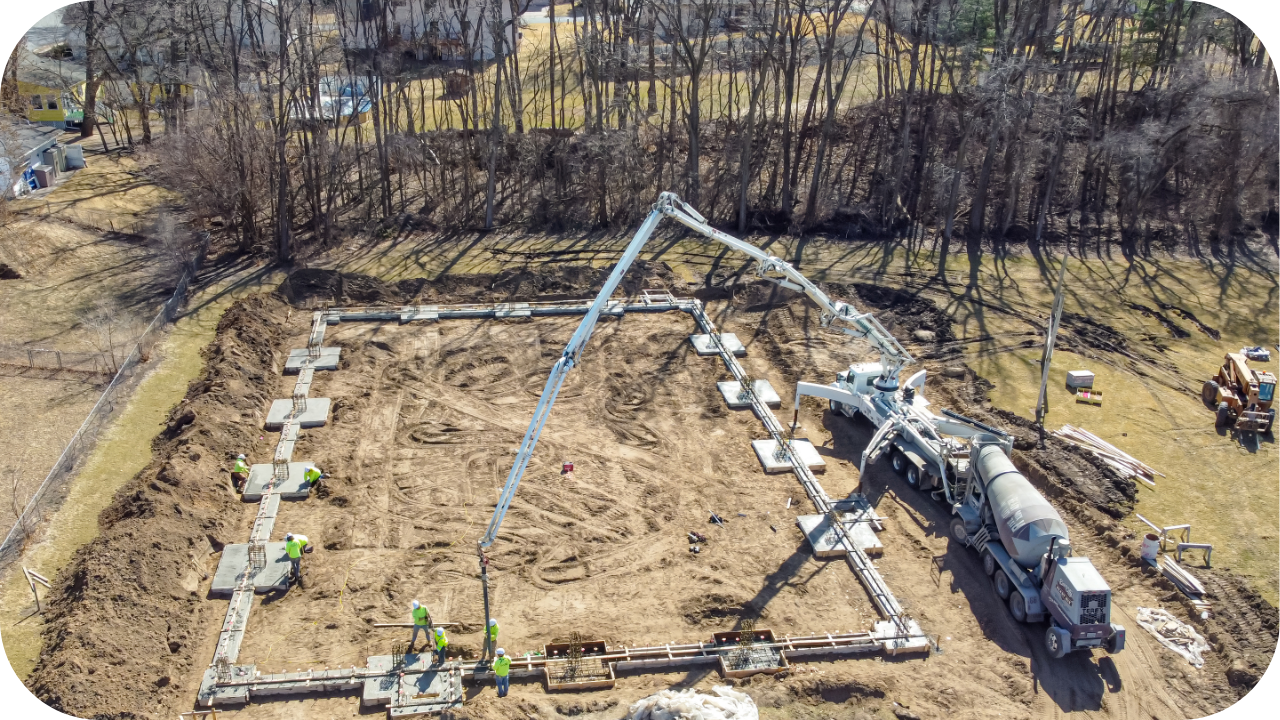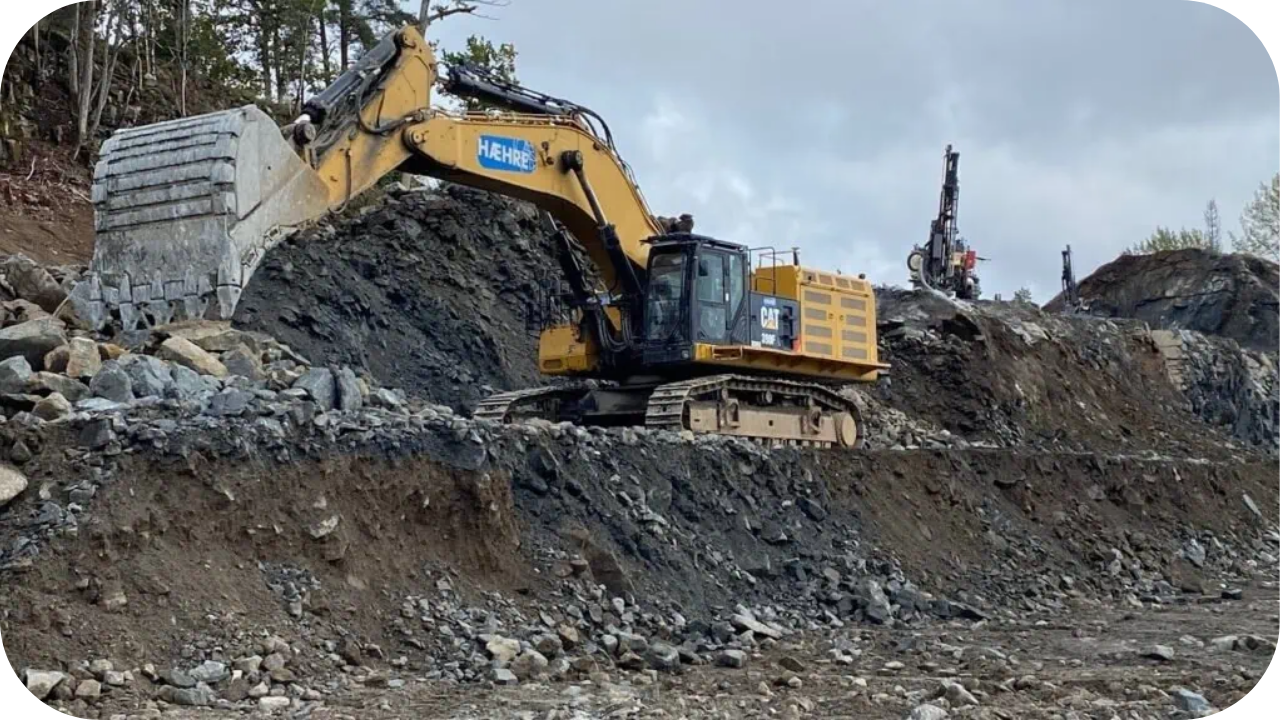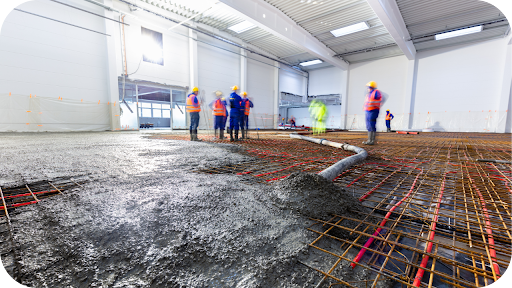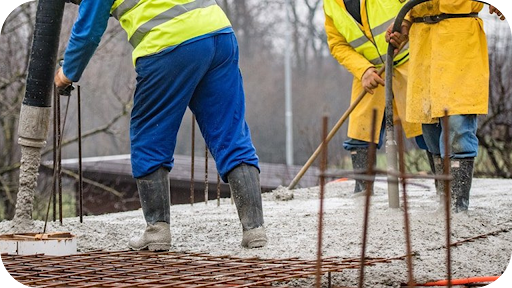

.png)
Melbourne’s uneven blocks are a builder’s nightmare, poor drainage, unstable soil and costly foundation errors are far too common.
One wrong move in site prep can lead to thousands in rework. In fact, improper site cutting is a leading cause of structural delays in residential builds across Victoria.
That’s where site benching comes in. This guide breaks down what benching is, why it matters, when to use it and how to do it right, especially on Melbourne’s tricky terrain. Let’s get stuck in!
Site benching is a method used to prepare sloped or uneven land for construction by cutting horizontal steps, or “benches”, into the ground. These benches create level surfaces that make it easier and safer to lay foundations, pour concrete or carry out excavation.
It is commonly used on hilly sites across Melbourne where flat ground is limited, and it plays a vital role in controlling erosion and managing water runoff.
Unlike general excavation, site benching is designed to reduce the risk of soil slippage and to support structural stability. Each bench is carefully planned to suit the slope, soil type and the project’s engineering needs. It is especially important in areas where reinforced concrete slabs or split-level homes are being built.
Properly executed benching not only protects your build but also ensures it meets local safety standards. It is one of the first and most crucial steps in getting your construction project off to the right start.

Melbourne’s varied terrain often includes sloping blocks, reactive clay soils and challenging weather conditions. These factors can make building on uneven ground risky without proper preparation.
Site benching is a crucial solution that helps create level platforms on sloped land, enhancing both safety and structural stability. It enables accurate foundation work, which is crucial in areas prone to shifting soils or heavy rainfall.
Benching also helps control surface runoff and prevent erosion, protecting your construction site and surrounding areas from water damage. In many Melbourne suburbs, local councils require benching as part of the planning approval process, particularly for new homes and developments on sloping sites.
Without proper benching, a site may experience drainage issues, cracking foundations or even soil collapse. By investing in expert site benching early, builders and developers can save time, reduce risk and ensure compliance. It is not just a technique; it is a safeguard for long-term building success.
Site benching isn’t always optional. Here are certain conditions and project types in Melbourne that necessitate a focus on safety and compliance.

The site benching process begins with a detailed survey and soil test to assess the land’s slope, stability and composition. From there, engineers determine the number, depth and angle of benches needed to create a safe and level base.
Once the plan is set, machinery such as excavators or bobcats are brought in to start cutting the land into horizontal steps.
Each bench is cut in layers, with excess soil either removed or reused elsewhere on-site. The benches are then compacted to ensure they are stable and ready to support construction. Drainage may also be installed at this stage to prevent water build-up or erosion.
Throughout the process, safety is key. Barriers or edge protection may be added to prevent collapse or injury. The result is a stable, well-drained platform that meets engineering and council requirements. This method is essential for preparing challenging sites across Melbourne for concrete slabs or structural builds.
When done right, site benching offers more than just stability. It lays the groundwork for a safer, faster, and more efficient build. Explore more benefits:

In Melbourne, site benching must comply with local council requirements and the Victorian Building Authority’s standards. These regulations ensure that any excavation or earthwork activity, including benching, is carried out safely and does not impact surrounding properties or the environment.
Each council may have specific rules based on land zoning, slope gradient and drainage needs.
Before starting any benching, builders are often required to submit detailed site plans, soil reports and engineering documentation. These documents demonstrate that the benching will support safe construction and comply with relevant codes. In some cases, planning permits are required, particularly if the project significantly alters land levels or affects neighbouring properties.
Failing to follow these guidelines can result in costly delays, legal penalties or failed inspections. Working with experienced contractors who understand Melbourne’s compliance landscape is vital. It ensures your project meets all necessary approvals while staying on schedule and avoiding unnecessary complications down the track.
Not all excavation methods suit every site; understanding the differences helps you choose the safest and most efficient option for your build.
This method creates stepped horizontal levels in the excavation wall, making it ideal for sloped or deep sites where soil stabilisation is necessary.
It improves safety, enhances access for machinery and workers, and complies with WorkSafe standards. However, it requires more space and is not ideal for narrow or tight sites.
Battering involves sloping the excavation wall back at a safe angle. It suits shallow or wide areas with stable soil, offering a simple and cost-effective solution that requires minimal equipment. The limitation is that it requires significant horizontal space, making it less suitable for urban sites with tight boundaries.
Shoring uses supports, such as hydraulic or timber props, to hold excavation walls in place. It is best suited for deep, vertical excavations or areas with tight access, allowing for vertical cuts while providing strong support.
However, shoring can be more expensive, requires a complex setup, and demands skilled labour for safe and compliant installation.

Choosing the right contractor can make or break your excavation project. Here’s what to check before committing to site benching.
Urban Pour is a trusted name in Melbourne for reliable, accurate, and compliant site benching services. Our team understands the city’s varied terrain and strict building regulations, making us the ideal choice for preparing sloped or challenging sites.
Whether you are building a new home, developing a commercial site or preparing for a retaining wall, we deliver level platforms that meet structural and drainage requirements from the ground up.
We work closely with engineers, builders, and property owners to ensure that every cut and bench is tailored to the project’s specific needs. With modern equipment, skilled operators and a safety-first approach, we complete earthworks efficiently and precisely.
Our knowledge of council compliance across Melbourne suburbs enables us to help you avoid costly mistakes before the build even begins.
At Urban Pour, we take site prep seriously because strong structures start with stable ground. If you need professional site benching done right the first time, we are the team to call.
Site benching isn’t just a technical step; it’s the backbone of safe, stable construction in Melbourne. Done right, it protects your crew, your budget, and your build. Don’t leave excavation to chance.
Whether you're working on a sloped block or preparing for a slab, Urban Pour has the tools and expertise to get it done. Get in touch today and let’s level up your site, the right way.

Choosing the right concrete contractor in Melbourne ensures strength, safety, and long-term value. Learn how Urban Pour delivers precision, quality, and trusted results on every project.
See more
Concrete pumping gives Melbourne builders faster, cleaner, and safer pours. Learn why it’s the go-to method for efficient, high-quality concrete placement on any site.
See more
Residential concreting gives Melbourne homes lasting strength and modern appeal. From driveways to interiors, Urban Pour delivers durable, design-focused results built for beauty and longevity.
See more